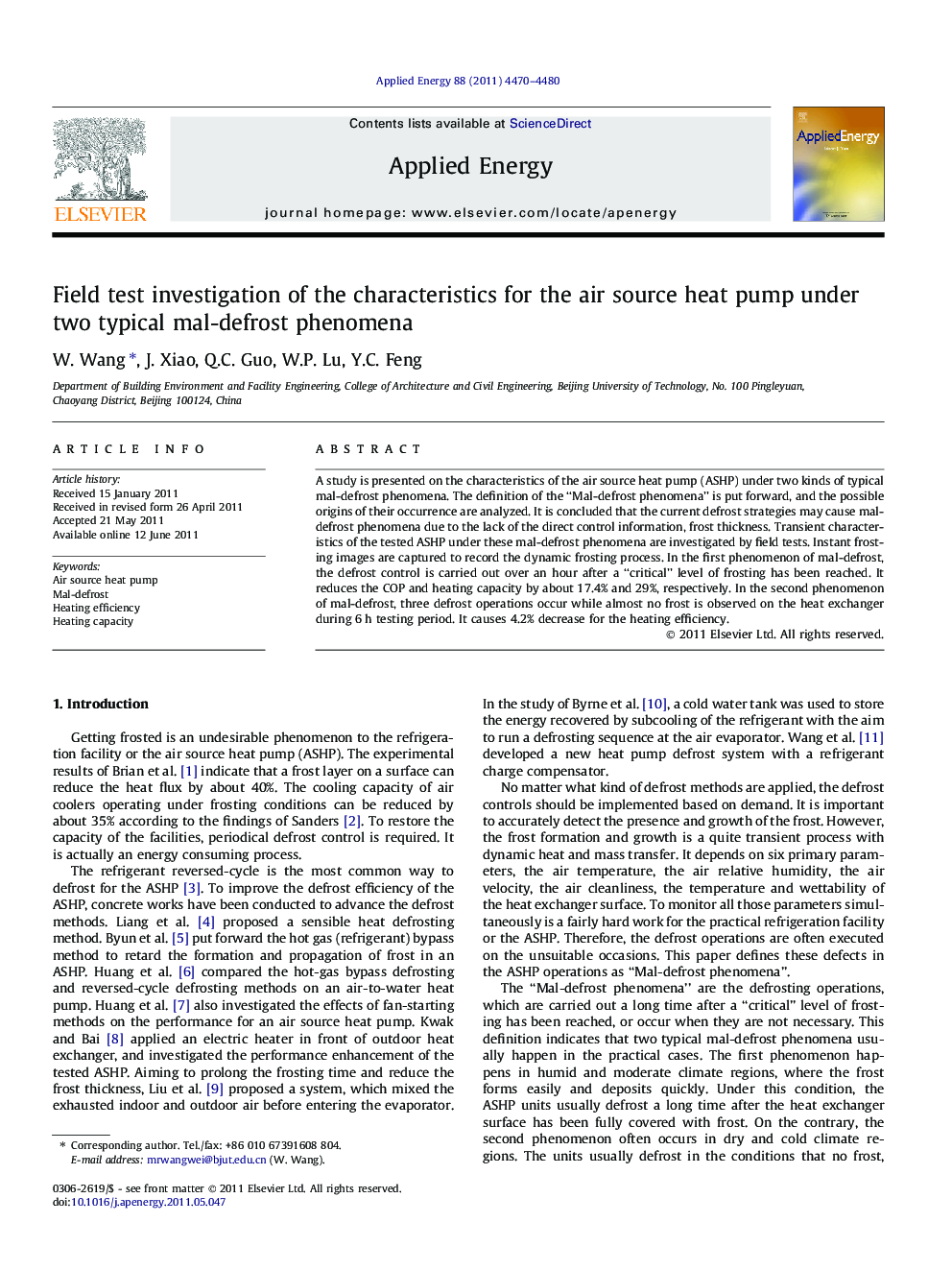| Article ID | Journal | Published Year | Pages | File Type |
|---|---|---|---|---|
| 243967 | Applied Energy | 2011 | 11 Pages |
A study is presented on the characteristics of the air source heat pump (ASHP) under two kinds of typical mal-defrost phenomena. The definition of the “Mal-defrost phenomena” is put forward, and the possible origins of their occurrence are analyzed. It is concluded that the current defrost strategies may cause mal-defrost phenomena due to the lack of the direct control information, frost thickness. Transient characteristics of the tested ASHP under these mal-defrost phenomena are investigated by field tests. Instant frosting images are captured to record the dynamic frosting process. In the first phenomenon of mal-defrost, the defrost control is carried out over an hour after a “critical” level of frosting has been reached. It reduces the COP and heating capacity by about 17.4% and 29%, respectively. In the second phenomenon of mal-defrost, three defrost operations occur while almost no frost is observed on the heat exchanger during 6 h testing period. It causes 4.2% decrease for the heating efficiency.
► Air source heat pump (ASHP) primarily bears two typical mal-defrost phenomena. ► Characteristics of ASHP under these mal-defrost phenomena are investigated. ► The first mal-defrost phenomenon leads to decrease of heating capacity and COP. ► The second mal-defrost phenomenon leads to decrease of the heating efficiency. ► Efforts need to be conducted to avoid these mal-defrost phenomena.
